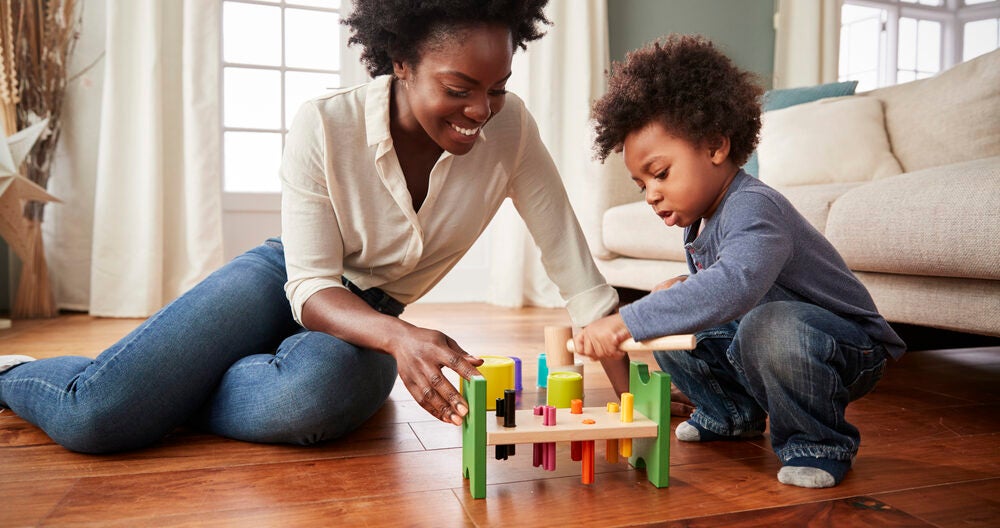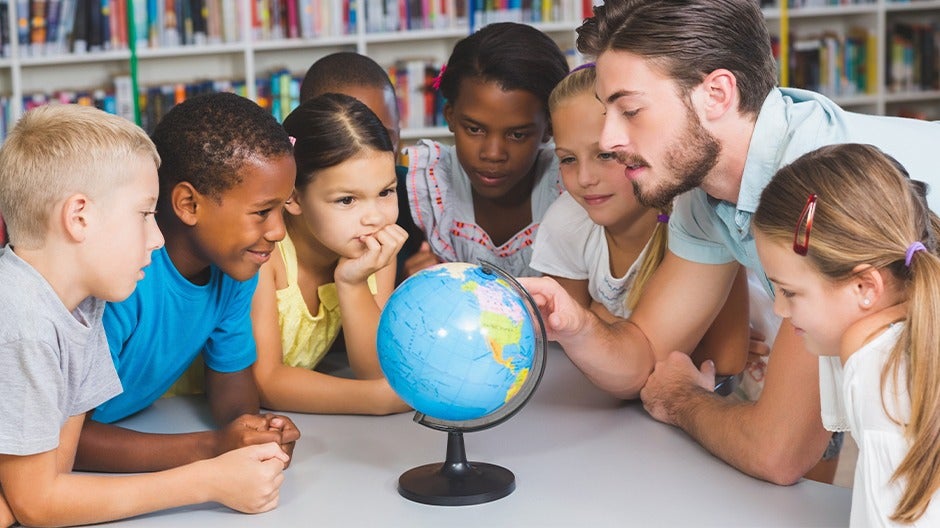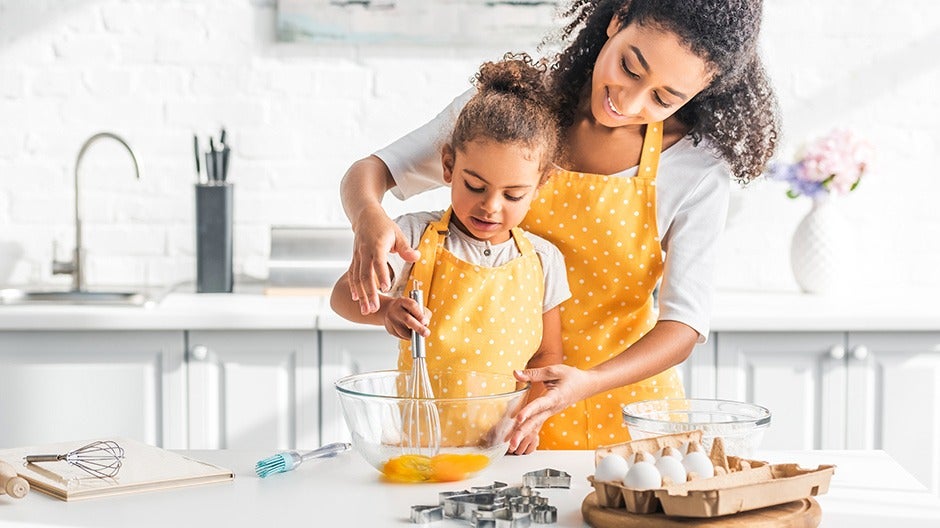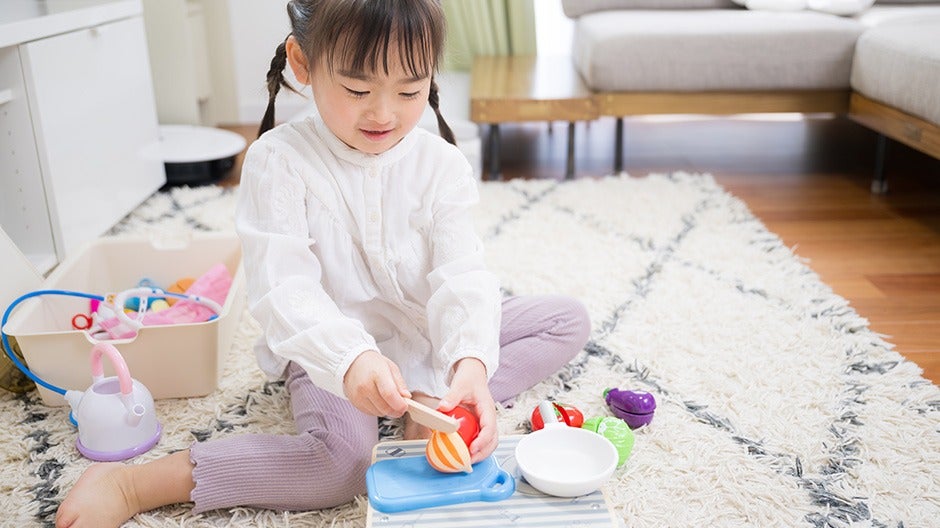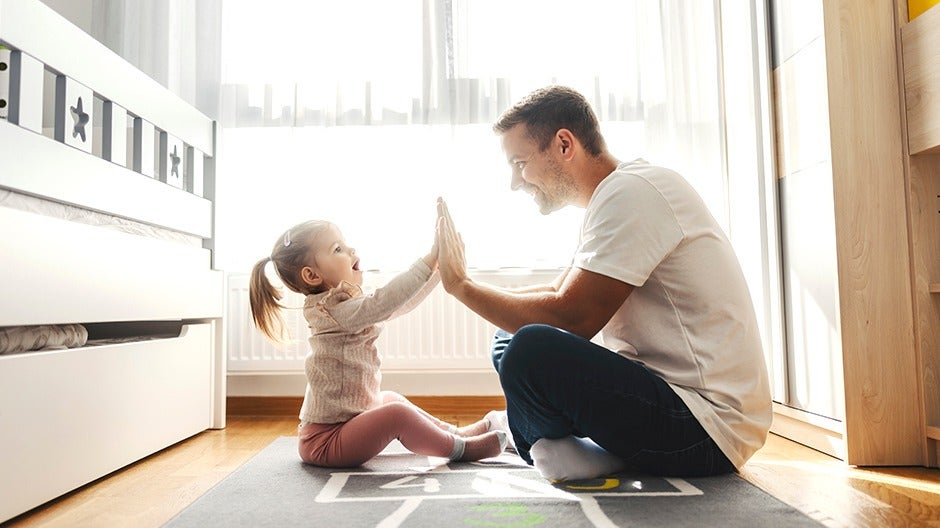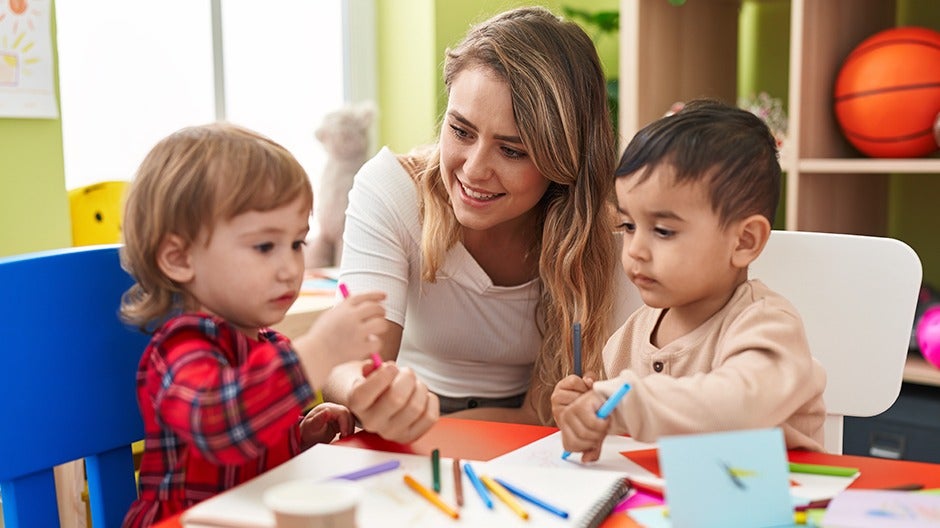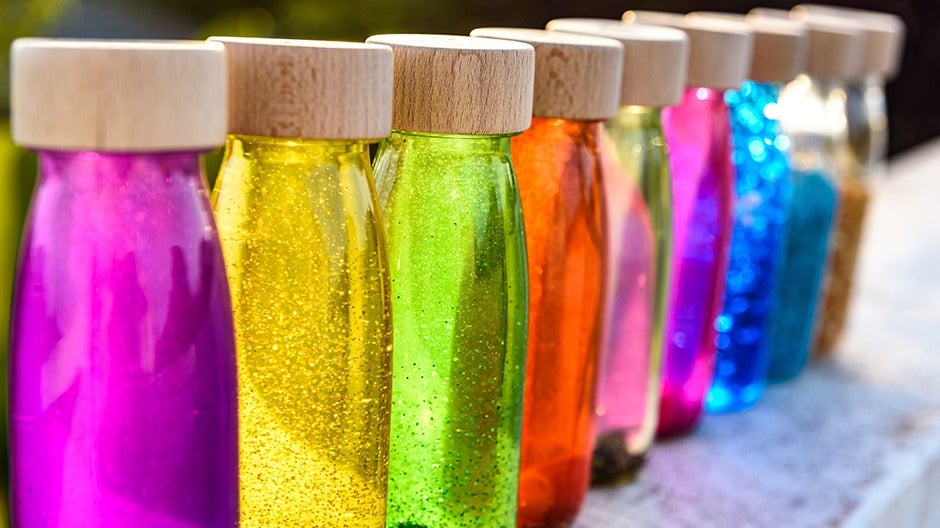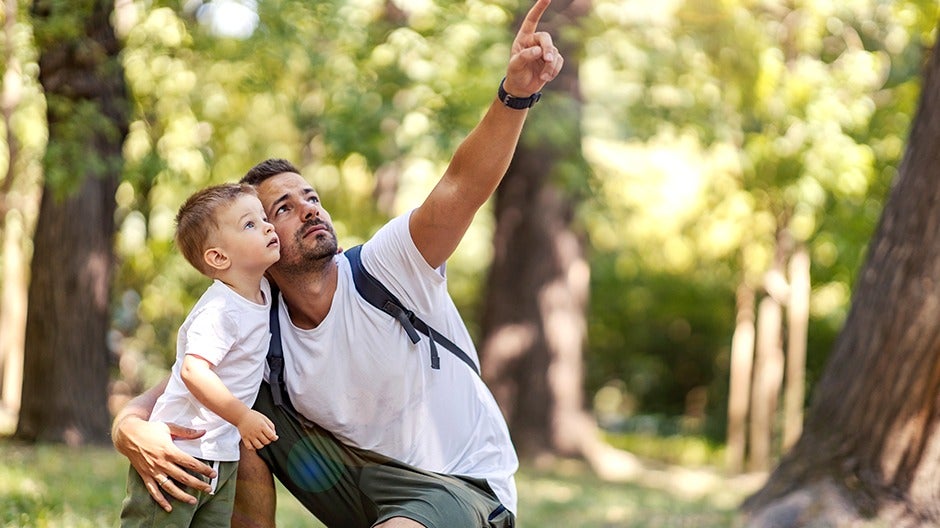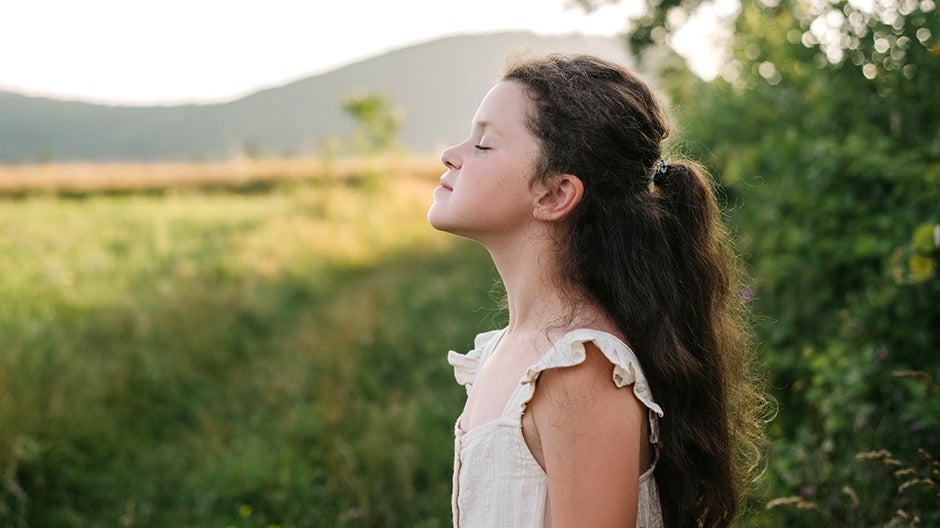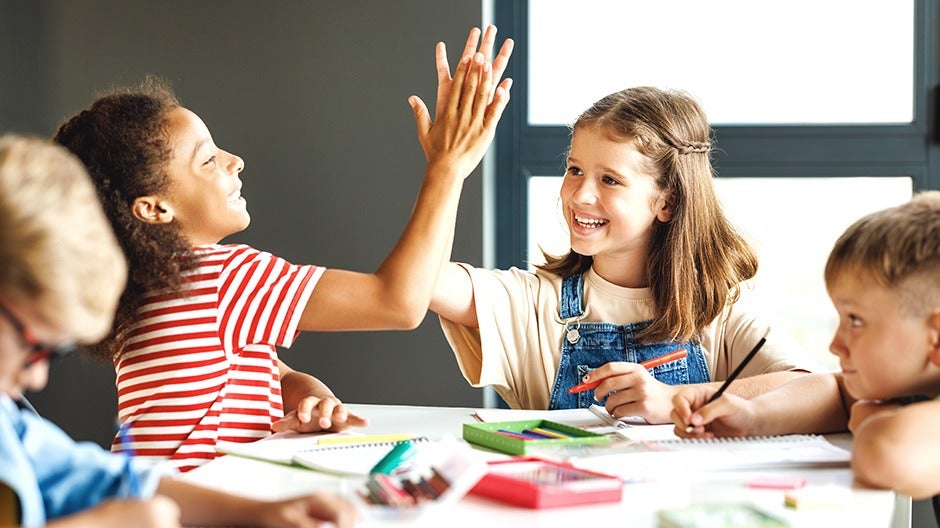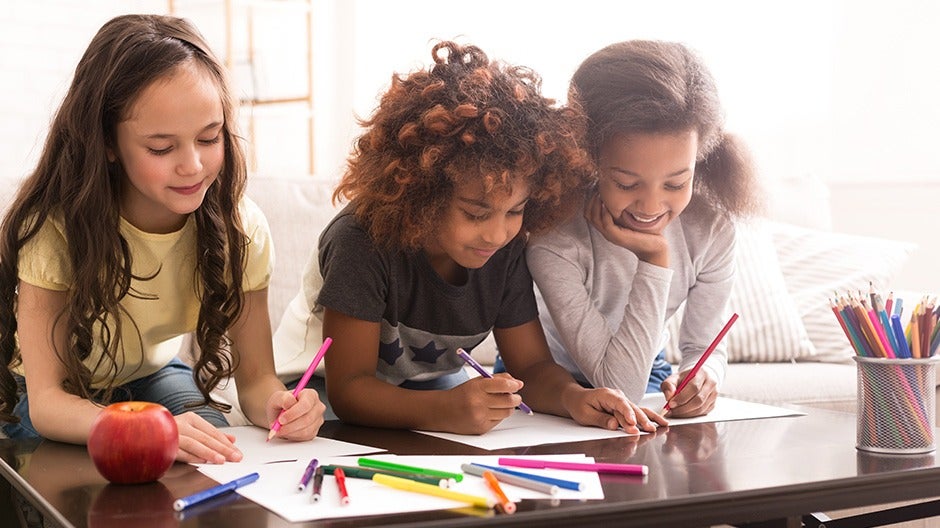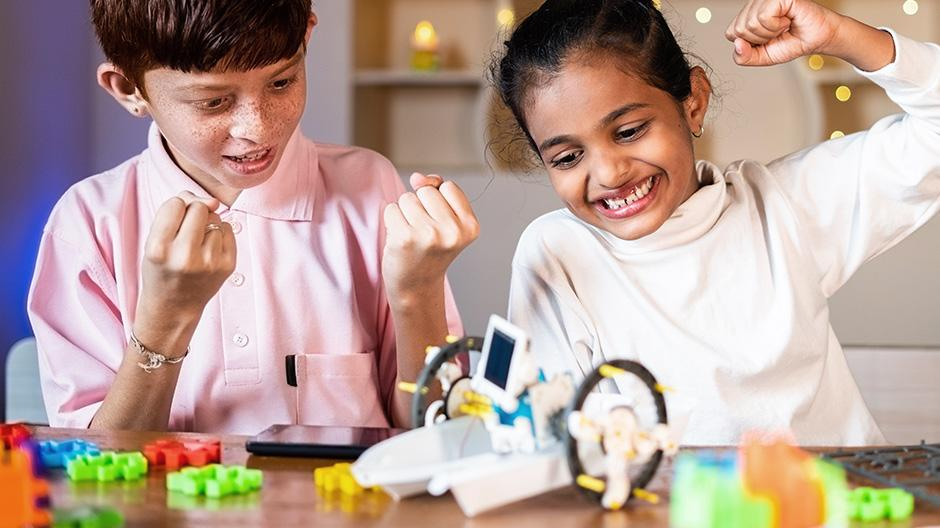Welcome to the terrific twos! Toddlers are bursting with energy and movement, and the age of 2 is a crucial time in their brain development. This is a wonderful opportunity to refocus their energy into fun learning activities for 2-year-olds. We know that as a parent to a toddler, it may feel more like lots of cleanups, tantrums, trying to prevent physical injuries…so we’re here for you with a curated list of fun things to teach your toddler!
While children do learn through everyday play, it’s also essential to create specific activities for them. At Begin, we recommend teaching toddlers fun activities focused around the 5 C’s, or 5 key areas of learning for all children: Core Skills, Creativity, Curiosity, Character, and Critical Thinking. By thinking in terms of the 5 C’s, you can ensure that your child’s learning development is holistic and well-rounded.
The Short Cut
- Learning activities for toddlers can help them with the 5 C’s that help them thrive in school and life
- Toddlers are bursting with growth–this is a crucial time in their development, and they’re ready to learn!
- Activities that involve one or more of their senses will help your child stay better engaged
- Parents can teach kids at their own pace to excite their interest
Introducing Your Toddler to New Learning
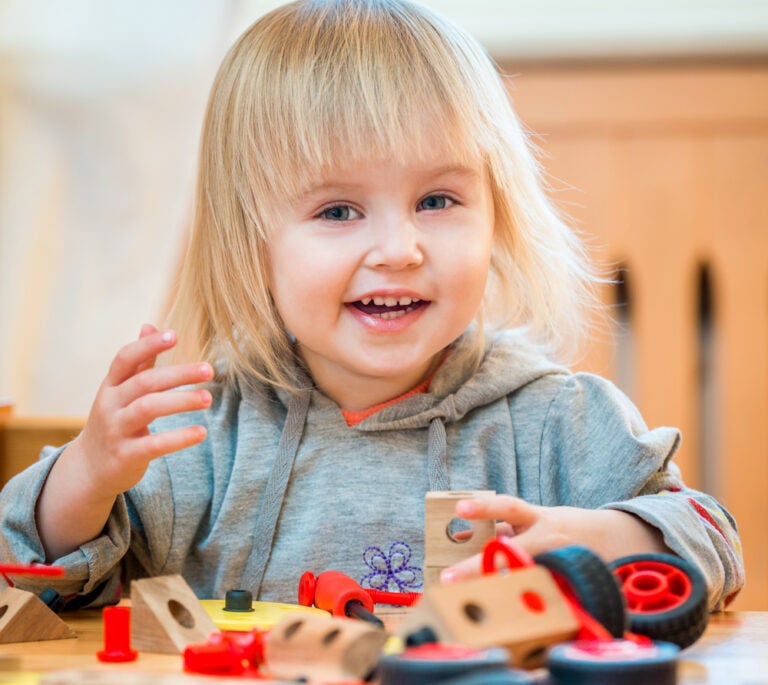
Stumped on what to teach a 2-year-old? Read on! In a nutshell, educational activities for 2-year-olds are essential because they:
- Introduce children to new concepts and Core Skills
- Allow kids to practice Critical Thinking as they face new challenges
- Help children learn to try until they succeed
- Encourage Curiosity as kids try new or unfamiliar things
- Help children continue developing their fine and gross motor skills
Try out some of the activities below—and watch your child’s creativity and curiosity grow!
Engage Your Child’s Senses
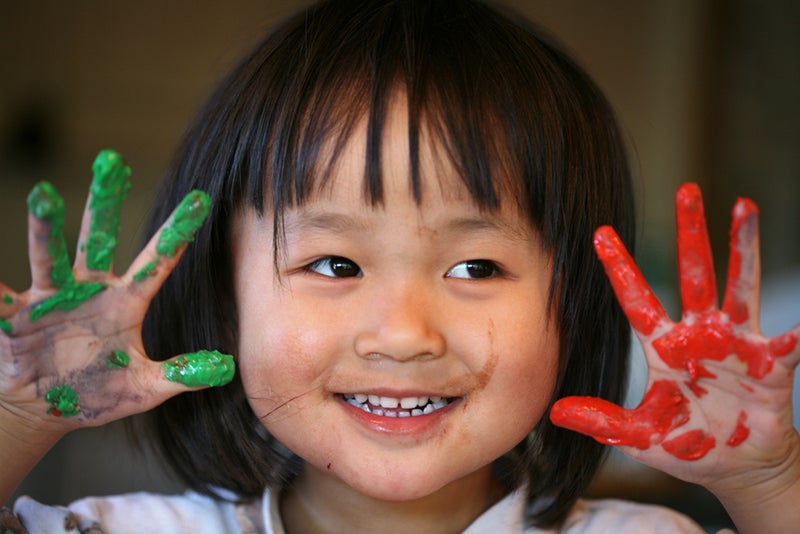
At this stage, one of the best ways your child is discovering their world is through their senses. You’ve probably noticed how your child’s tiny fingers and hands love touching and exploring new textures.
Of course, it’s not always possible to engage every sense through play, but ensuring that the activity you choose involves using at least a couple of their senses will help your little learner continue learning through external stimuli.
Is the Activity Safe?
It’s important to choose activities for 2-year-olds that are child-friendly. For instance, consider if the items for a game you’ve selected are small enough to fit in your child’s mouth. Choking is a serious hazard for children under three.
While you’ll likely be closely monitoring their play, it’s beneficial to be proactive and avoid unnecessary stresses.
Is the Activity Age-Appropriate?
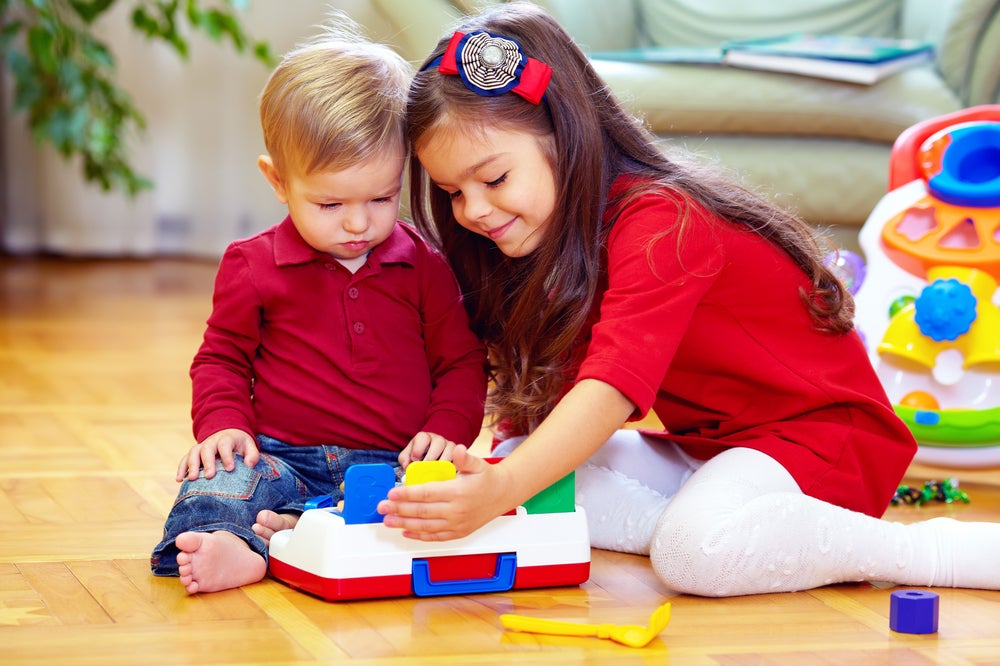
When choosing learning activities for 2-year-olds, keep in mind the developmental milestones to expect from your child.
For instance, by the 24-month mark, children can sort shapes and colors, build towers of four or more blocks, and communicate in simple two- to four-word sentences.
Understanding these and other milestones will help you choose the most relevant games to help your child continue learning and growing at a healthy rate.
Fun Learning Activities for 2-Year-Olds
1. Mini-Tangram Puzzle
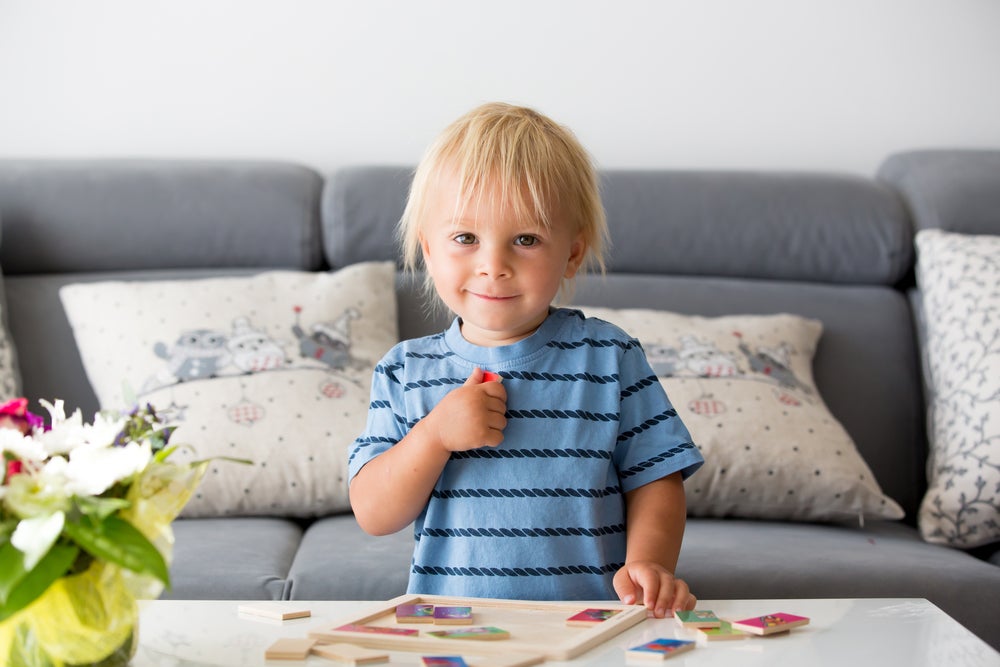
What You’ll Need:
- Our printable mini-tangram puzzle guide
- A pair of scissors
What to Do:
After printing out the file, proceed to cut out the different shapes on the first page. The second page has an outline that the cutouts from the first page will fit into perfectly.
Start by showing your child where and how to put the puzzle pieces together. Afterward, step back and let them practice on their own.
In the beginning, there might be a lot of trial and error. That’s okay! This is the perfect opportunity for them to practice their problem-solving skills.
To make it more challenging, your child (or their older sibling) can complete the puzzle using only the border on page three.
Optional: Make Your Own Puzzle
If your child has mastered our mini-tangram puzzle, why not make your own?
Start by gluing a picture you like onto some firm paper (bond or construction paper). Then cut this into four, five, or more pieces. Just like that, you have yourself a new puzzle!
You can also give your child a piece of bond or construction paper and let them draw their own puzzle, which you can then cut out for them to piece back together.
2. Crazy Costumes

What You’ll Need:
- An iOS or Android device with the HOMER app
- Another favorite character
What to Do:
In this fun activity, children get the opportunity to dress up their favorite HOMER characters! Your child’s storytelling and creativity will be front and center here.
You can follow this link to get detailed instructions about playing Crazy Costumes on different devices (iOS and Android).
If you don’t have the HOMER app, see what characters you already have around the house. Does your child have a favorite stuffed animal or poster? Get creative using found objects to recreate their favorite character’s look and vibe, or come up with a brand-new persona!
What crazy costumes will your child come up with?
3. Play Dough
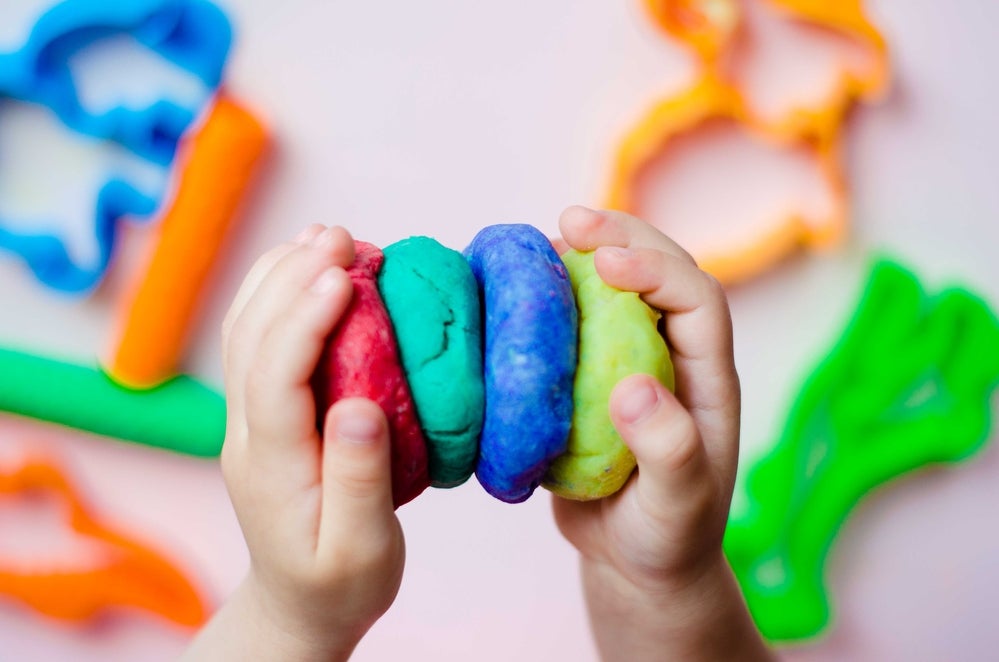
If your child loves play dough (what kid doesn’t?), then don’t forget to incorporate this soft and squishy material into their playtime.
There are many relevant play dough activities for 2-year-olds, including:
- Creating basic shapes, like a ball or a pancake
- Forming animals, like a snake, fish, or dog (remember it’s okay if these animals aren’t perfect!)
- Learning basic 2-D shapes by outlining triangles, squares, and circles with their play dough
We also encourage you to use a variety of play dough colors so your child can practice learning colors while they play. Hands-on activities engage kids’ senses and are a fantastic way to fully immerse your child in learning!
4. Building Blocks
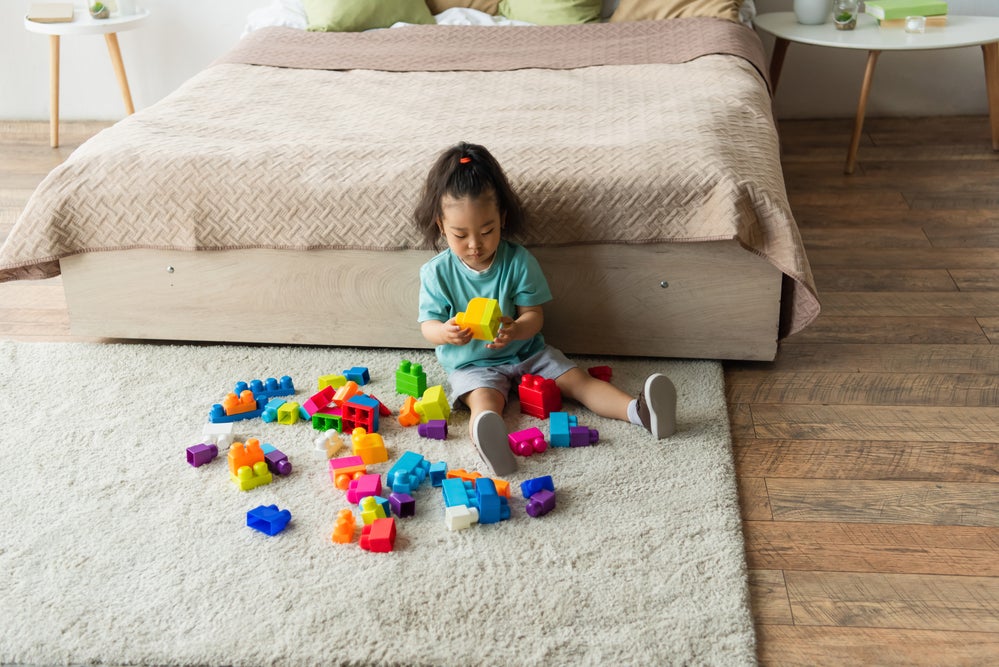
What You’ll Need:
- Set of building blocks
- Large play mat
What to Do:
If your child is like most 2-year-olds, they probably love playing with blocks! Playing with building blocks is a great independent activity for children, but you can also join in to help enhance learning.
You may ask questions to encourage Creativity, such as:
- What is your building — a school or a home, a toy store or an ice cream parlor?
- Who lives in your building?
- Who might visit it?
- What else is in the neighborhood?
By thinking through these questions, your child will be improving their language skills as well as Creativity.
Additionally, you can use blocks to demonstrate how to create a solid base for a building and to practice counting and learning colors (e.g., let’s stack two red blocks on top of each other).
5. Color Mixing Sensory Bag
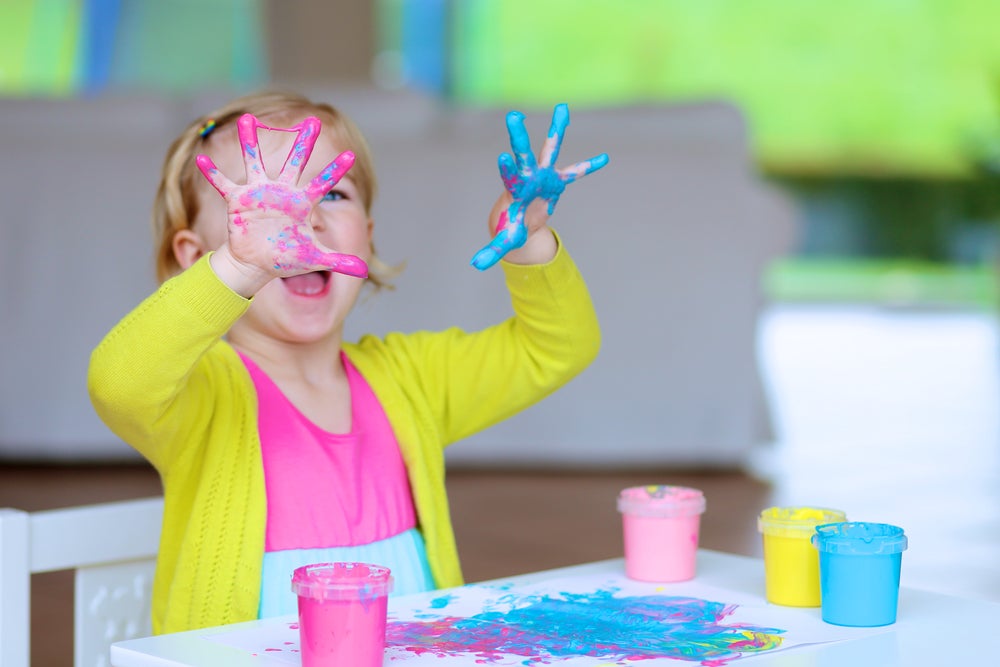
What You’ll Need:
- Icing or shaving cream
- Food coloring
- One small bowl
- Toothpick or spatula
- Large zip-top bag and tape, or cookie sheet
What to Do:
Start by filling your bag with icing or shaving cream. After selecting two different colors, add a few drops of each into the bags. Proceed to tape the bag carefully onto a working surface. Now, your child can use their fingers to squish and mix the colors.
While they’re mixing, put some icing or shaving cream into your bowl. Next, add a few drops of food coloring into the bowl and fold the color into the icing or shaving cream.
Lastly, it’s time to scoop the colored icing or cream into the bag or cookie sheet and encourage your child to mix the two colors.
Color mixing is a great hands-on activity to engage your child’s senses while they learn Core Skills.
6. Colorful Cookies
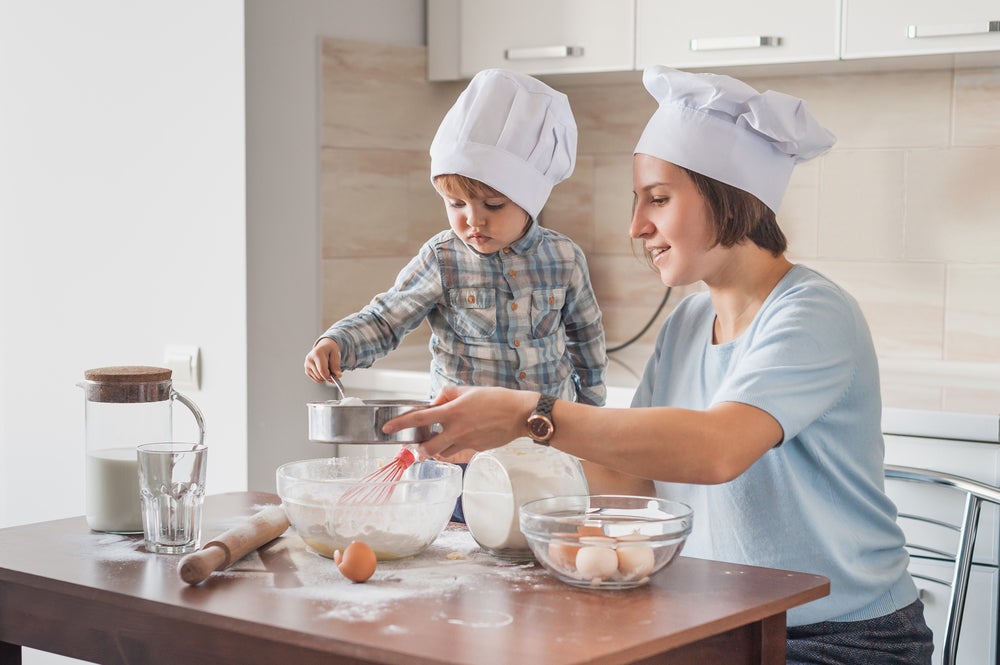
What You’ll Need:
- 1 cup of butter or margarine
- 1 cup of sugar
- 1 large egg
- 1 teaspoon of vanilla extract
- 2 teaspoons of baking powder
- 2 ¾ cups of flour
- Food coloring
- Rolling pin
- Cookie sheet
- Cookie cutters
What to Do:
For detailed instructions on making delicious cookies your 2-year-old (and you!) will enjoy, check out this activity put together by the team from our HOMER app.
This is a great activity to help your child explore kitchen items. They can also act as a little sous chef by helping you roll the cookie dough and use the cookie cutters.
This activity is also excellent for language development, learning colors, and sensory skills. Considering all the yummy goodness from this activity, they probably won’t need much encouragement to participate!
7. Plant a Seed
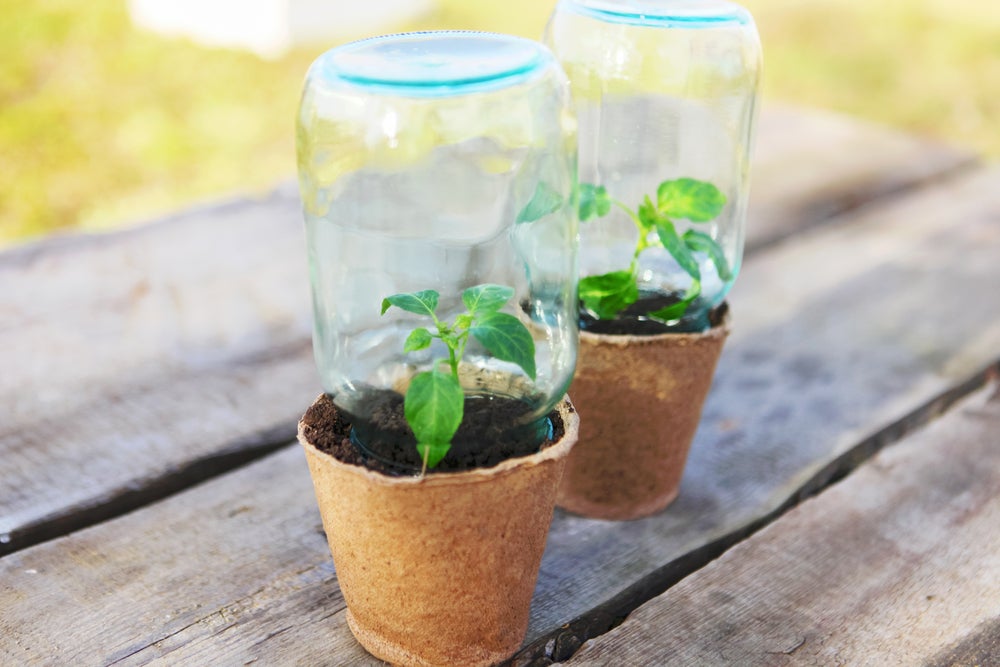
What You’ll Need:
- This printable field notes template
- Crayons or pencils
- A large jar (glass or clear plastic)
- Fast-growing seeds (e.g., peas or beans)
- Paper towels
- An old milk or juice carton
- A ruler or measuring tape
What to Do:
Follow the simple instructions from our field notes template to help you plant a seed and watch it grow! Your child can actively participate by measuring the plant daily and observing any noticeable changes.
We love this activity, as it helps to encourage language development. It also helps your child boost Critical Thinking by learning to compare and contrast (as the seeds grow) and understand the basic needs of a growing plant (e.g. sunlight and water).
Teach Them at Their Own Pace
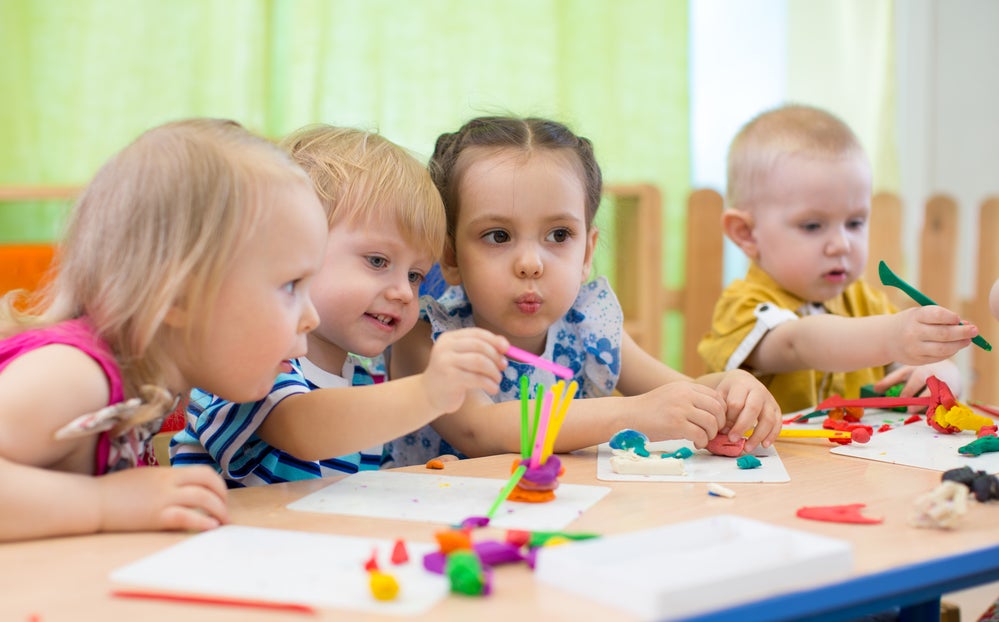
Toddlers grow at an incredible rate! By introducing the 5 C’s through fun learning activities for 2-year-olds, you’re helping support that growth even more. Whether you use some or all of the above activities, we hope you and your child have fun through it all! If you find yourself needing extra things to do with a 2-year-old like healthy screen time that will continue building on the 5 C’s, try our HOMER app!
